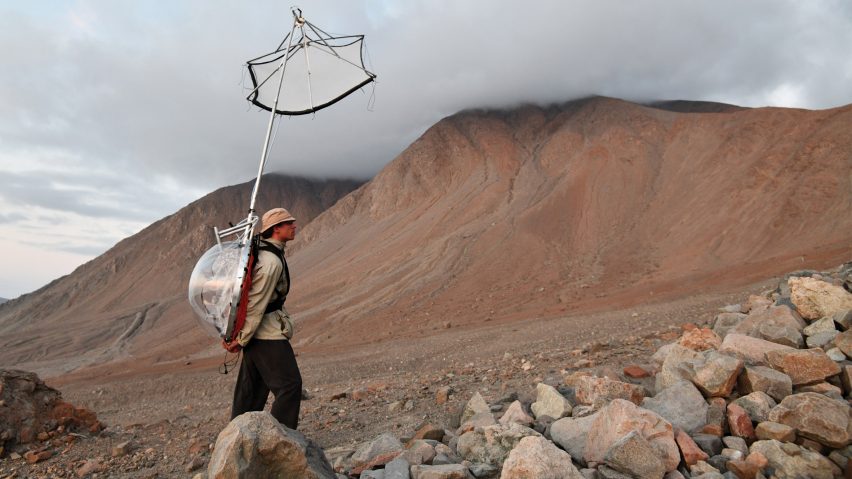
Lexus Design Award 2023 announces winning entries
Promotion: a device that collects fog and transforms it into drinking water and a puzzle created for visually impaired people are among the winners of this year's Lexus Design Award.
Lexus Design Award is an international design competition that recognises up-and-coming designers. Under the theme Design for a Better Tomorrow it spotlights projects that aim to help resolve social issues and prepare for the future.
The four winning designs for 2023 include Fog-X by Swedish designer Pavels Hedström; Print Clay Humidifier by Chinese designer Jiaming Liu; Touch the Valley by US design studio Temporary Office; and Zero Bag by Korean designers Kyeongho Park and Yejin Heo.
This year's judging panel was made up of MoMA curator Paola Antonelli, New York-based designer Karim Rashid and global head of design at Toyota and Lexus Simon Humphries.
The winners were selected via criteria based on Lexus's principle: Anticipate, Innovate, Captivate and Enhance Happiness.
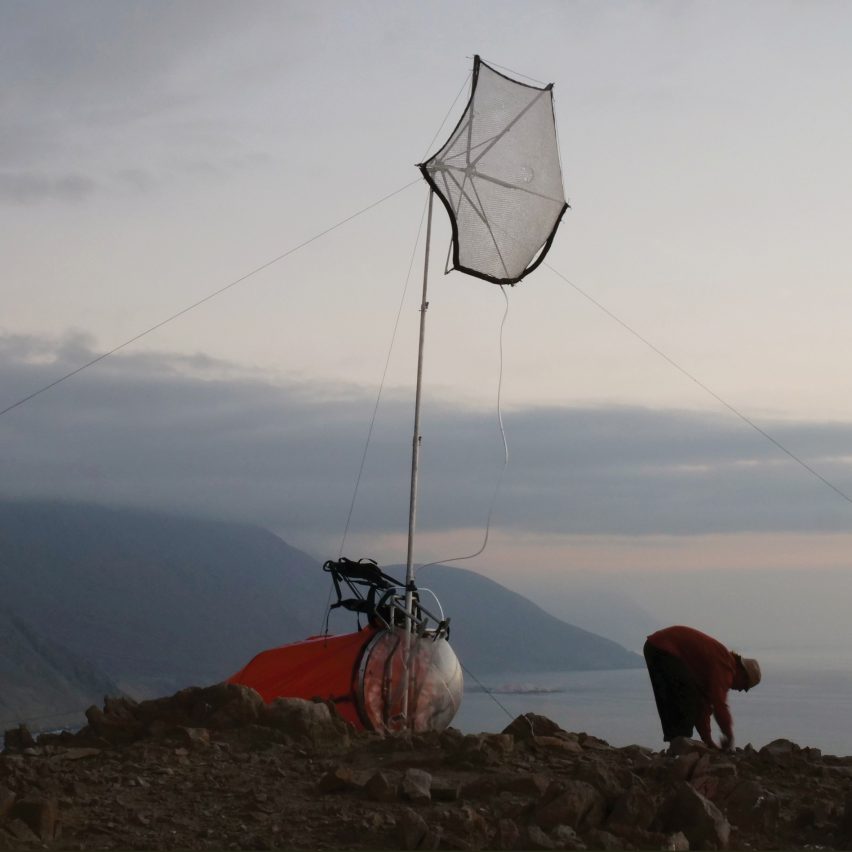
Fog-X by Pavels Hedström is an expandable mobile device designed to collect fog and transform it into drinking water. It was created for use in arid environments where water is scarce, and can produce up to ten litres per day.
The umbrella-like device uses a mesh to collect fog, before channelling it into a water container. It is made from lightweight aluminium, recycled steel and PET plastic.
Fog-X is informed by the Namib Desert beetle, which collects water from fog. The design responds to the fact that approximately two billion people in the world lack access to clean drinking water, according to the designer.
"The outcome of extreme water scarcity became the starting point of designing habitats that could be self-sufficient in collecting clean water during the field studies in the Atacama Desert in 2019," said Hedström.
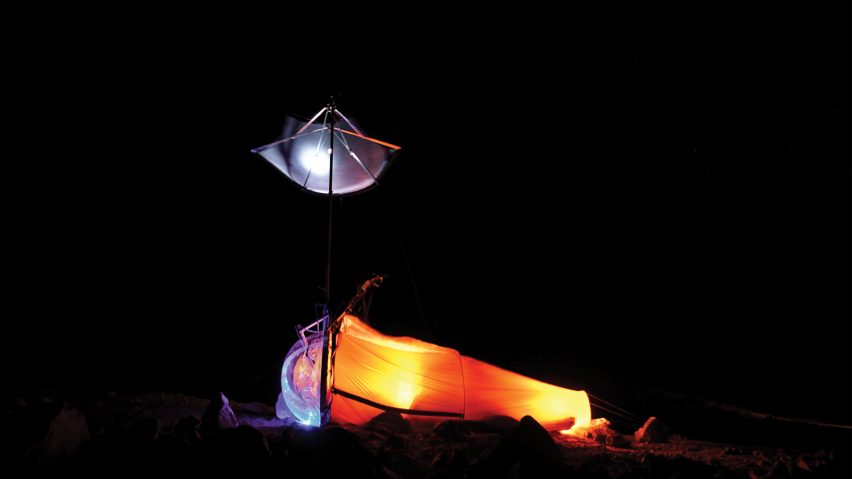
Print Clay Humidifier – a 3D-printed non-electric clay humidifier – was created by Jiaming Liu from recycled ceramic waste.
"In my childhood, I lived in a building made of concrete and hard clay. In summer it was very hot and dry, so you just put the water on the wall and then the wall absorbed the water so quickly. I think this simple experience is the starting point of the project," said Jiaming Liu .
The project addresses the issue of ceramic waste being dumped in landfills. According to the Liu, the material is "a useful social resource but it can also negatively affect the environment".
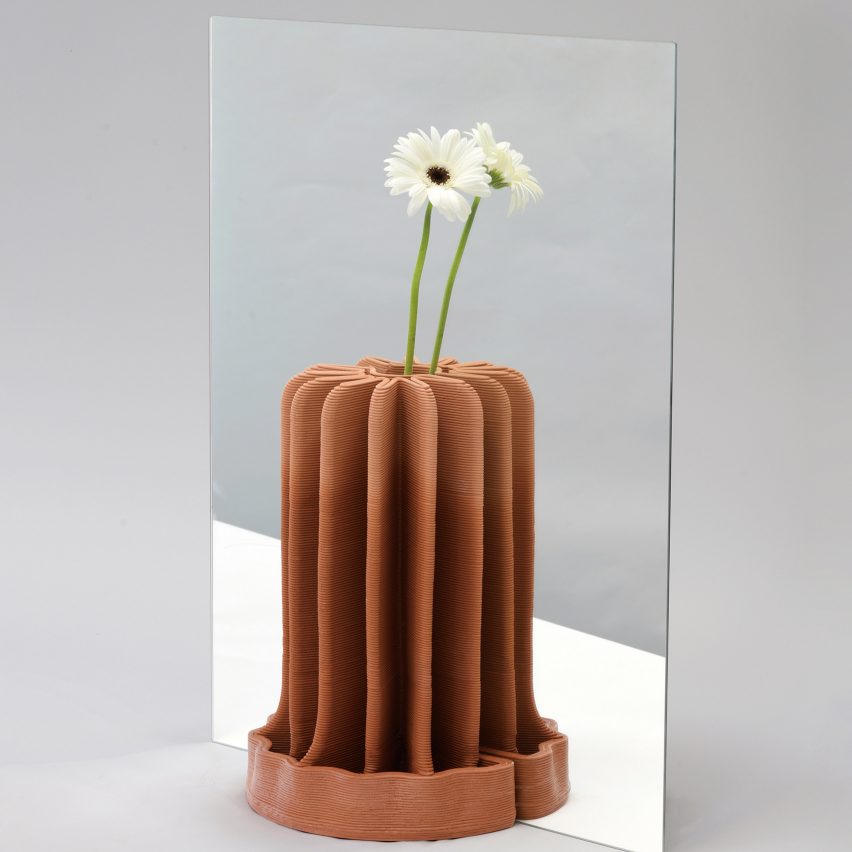
The humidifier is made from recycled ceramic powder. Its upper part absorbs water then evaporates it, while the lower part collects and stores up to 500 millilitres of water.
"The recycled ceramic powder improves the strength and water absorption of the structure," said Liu. "The project aims to explore the use of sustainable materials and possible applications for 3D-printed clay."
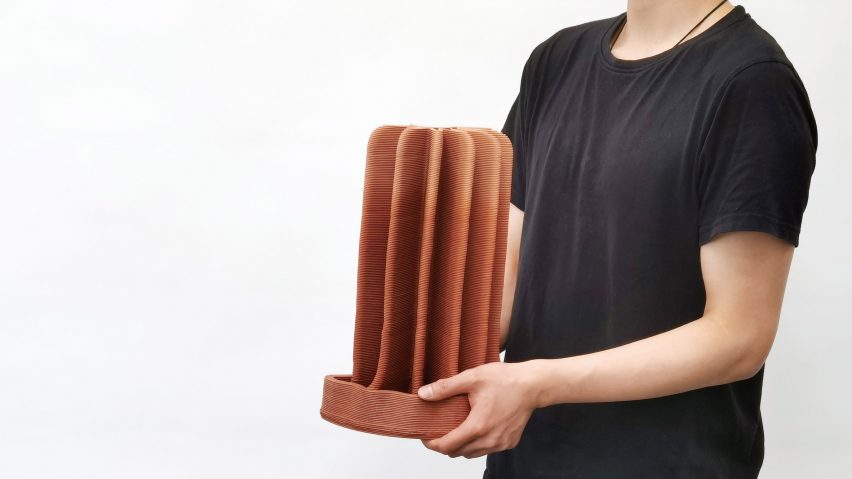
Touch the Valley by Temporary Office is a 3D topographic puzzle designed to be used by visually impaired people.
The process of piecing together the puzzle aims to “encourage experience of the physical world through touch".
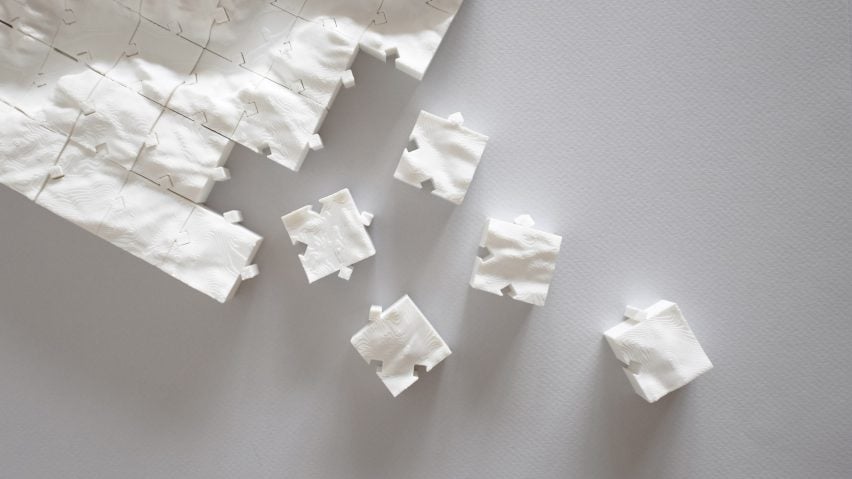
"My grandmother was losing her sight gradually as she was getting old and she found it difficult to do many things in her daily life, especially cooking," said Lai. "It was quite hard for her to find a knife in a kitchen, cut vegetables properly and figure out where a stove is. And then I thought that it's much easier for visually impaired people to recognise stuff by touching not watching."
"That was the starting point of this project," the Lai continued.
The puzzle pieces have a zigzag texture and contours that "flow" across them, allowing users to feel which segments connect to each other.
Its design was informed by the Yosemite Valley in Sierra Nevada, California, which is known for its natural features that have high elevation differences, according to Touch the Valley.
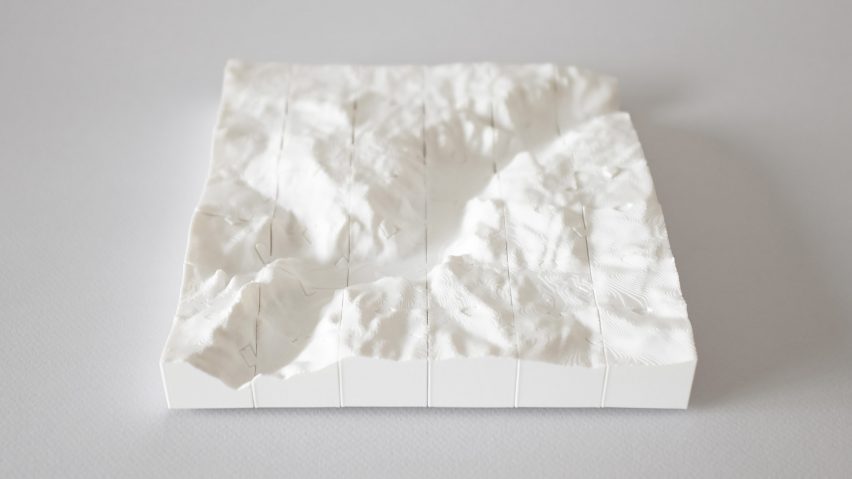
"Board games and jigsaw puzzles should always attempt to include players of all abilities or disabilities," said the design studio.
"Through this practice of using touch in designing a topographic puzzle, we can slowly uncover the tactile opportunities in our physical world and share the experience between the sighted and visually impaired communities," the studio continued.
The last winning design is Zero Bag by Kyeongho Park and Yejin Heo – clothing packaging that is made from algae and dissolvable in water.

"My girlfriend buys a lot of clothes that are wrapped in plastic bags which is a huge waste and bad for the environment. With more than 100 billion items of clothing being made worldwide each year, packaging waste is on the rise," said Park.
"To solve this problem, we came up with the idea of creating packages that would dissolve in water with detergent because she would also wash the clothes that she bought."
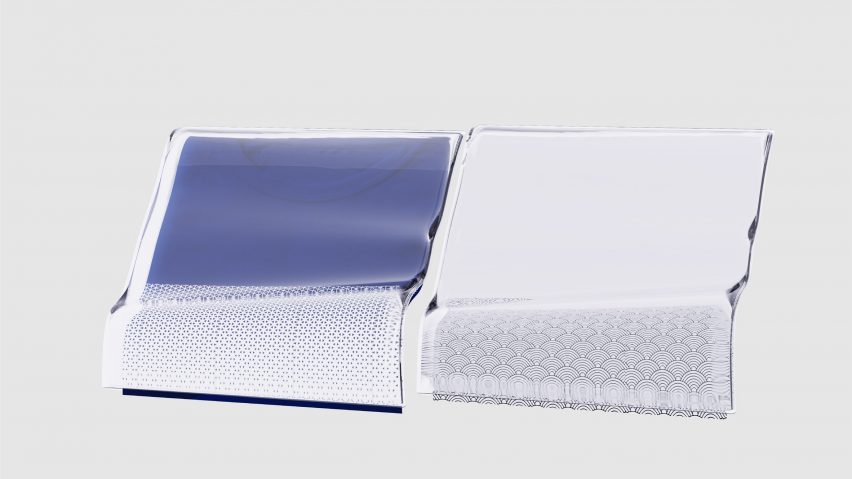
According to Park, the idea was born from observing consumer behaviour in Korea where newly purchased clothes are washed to remove chemicals before wearing.
The packaging also incorporates paper detergents that are attached to water-soluble plastic, which means that it can be used to wash clothes as it dissolves.
Detergent could also be replaced with baking soda for other cleaning purposes, or the bag could be used to store food, such as fruit.
The four winning designs were selected from over 2,000 entries from 63 countries and regions.
Once selected, the winners were invited to a three-month mentoring program, where they collaborated with Dutch solar designer Marjan van Aubel, New York designer Joe Doucet, Japanese sound designer Yuri Suzuki and South African architect Sumayya Vally to improve their products.
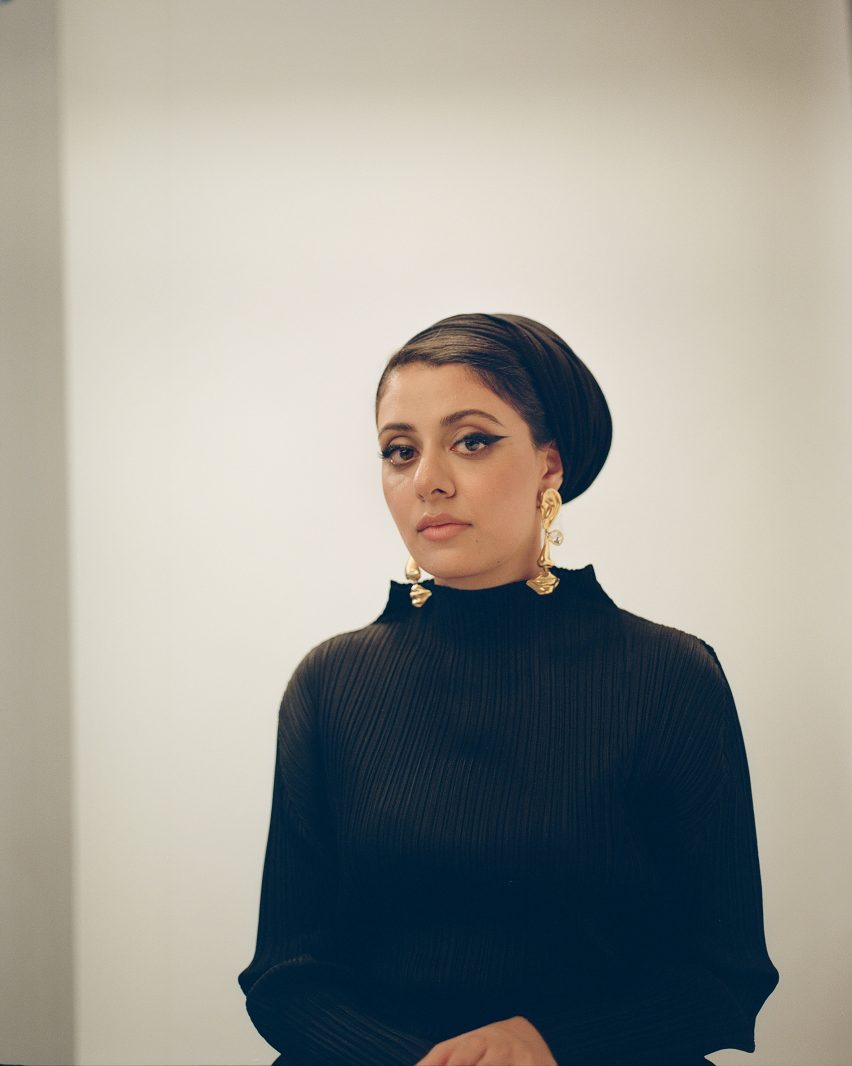
"It was a truly enjoyable session with designers, energetic, strong ambition for all projects," said Yuri Suzuki. "I think this is the very beginning so there are still ambiguous concepts as well as ideas. There is a lot of space to work on."
"Personally, I strongly recommend meeting people and sharing ideas and getting opinions which makes the project more meaningful and rich," the designer continued.
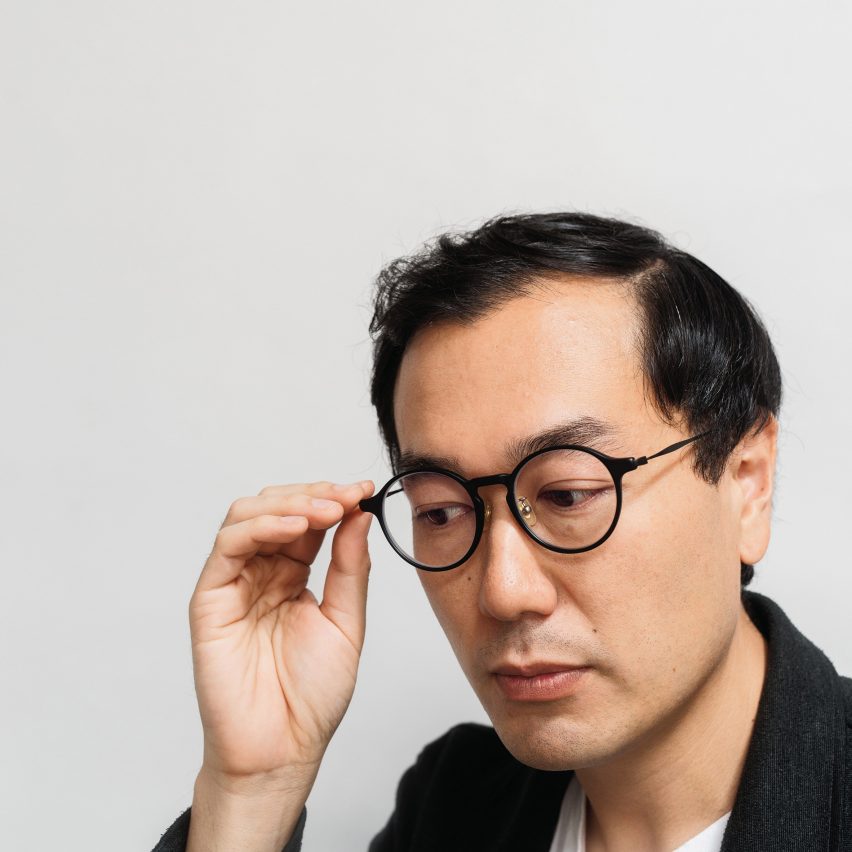
"Design is truly a vocation - to be a designer means to intertwine and absorb everything we see and experience and read - during work time, rest time, reflective, meditative time or when searching for stimulus and a shift in atmosphere through the arts and cultural exchanges," said Sumayya Vally.
"All these forces become part of our being and are in our eyes and hands when we work. This is why being aware and conscious of our environments and the people and energies we surround ourselves with is so important."
Lexus will present the prototypes at Milan Design Week 2023 to showcase how the four winners’ ideas have developed through interaction with the mentors.
The public will also be invited to choose their favourite designs as part of People's Choice Award, which will be announced at a later date.
To view more about the award, visit Lexus' website.
Partnership content
This article was written by Dezeen for Lexus as part of a partnership. Find out more about Dezeen partnership content here.